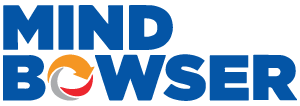Across the United States, Medicaid agencies are tightening trip verification requirements. States like Texas, New Jersey, and Florida already mandate electronic GPS validation for reimbursement. Providers that cannot produce timestamped and GPS-verified logs risk claim denials, audits, and penalties. This makes GPS for medical transportation not just a convenience but a compliance safeguard.
Fuel and maintenance represent nearly 30 percent of an NEMT provider’s operating expenses. Without route optimization, drivers may take longer or redundant routes, leading to higher mileage and wasted resources. Modern route planning software for NEMT uses traffic data, patient addresses, and clinic schedules to calculate the most efficient routes. This directly reduces fuel consumption and driver overtime while improving vehicle utilization.
Consumer transportation apps now shape the patient experience. Riders expect accurate pickup times, live driver tracking, and notifications about delays. Offering real-time visibility through NEMT fleet management systems helps reduce patient anxiety, increase satisfaction, and cut down on missed appointments. Clinics and caregivers also benefit from being able to track vehicles, ensuring patients arrive on time for dialysis, chemotherapy, or specialist visits.
Fraudulent billing remains a significant challenge in the Medicaid transportation system. GPS tracking provides an auditable record of each trip, showing precise pickup and drop-off times, mileage, and route taken. This digital trail reduces the risk of false claims and protects providers during state or federal audits. For many operators, GPS data has become the deciding factor between claim approval and costly rejections.
At its foundation, NEMT GPS tracking relies on either dedicated GPS devices installed in vehicles or mobile driver apps that use smartphone GPS signals. Both methods transmit live location data to a central dispatch software system. This enables operators to see the real-time position of every vehicle, monitor its movement on a map, and calculate estimated times of arrival with accuracy.
When trips are assigned, dispatchers gain a full view of the vehicle’s route, progress, and status updates. They can see whether a driver is en route, has arrived at the pickup point, or has completed a drop-off. This visibility eliminates guesswork, allowing dispatchers to make informed adjustments if traffic delays occur or if another urgent trip request arises.
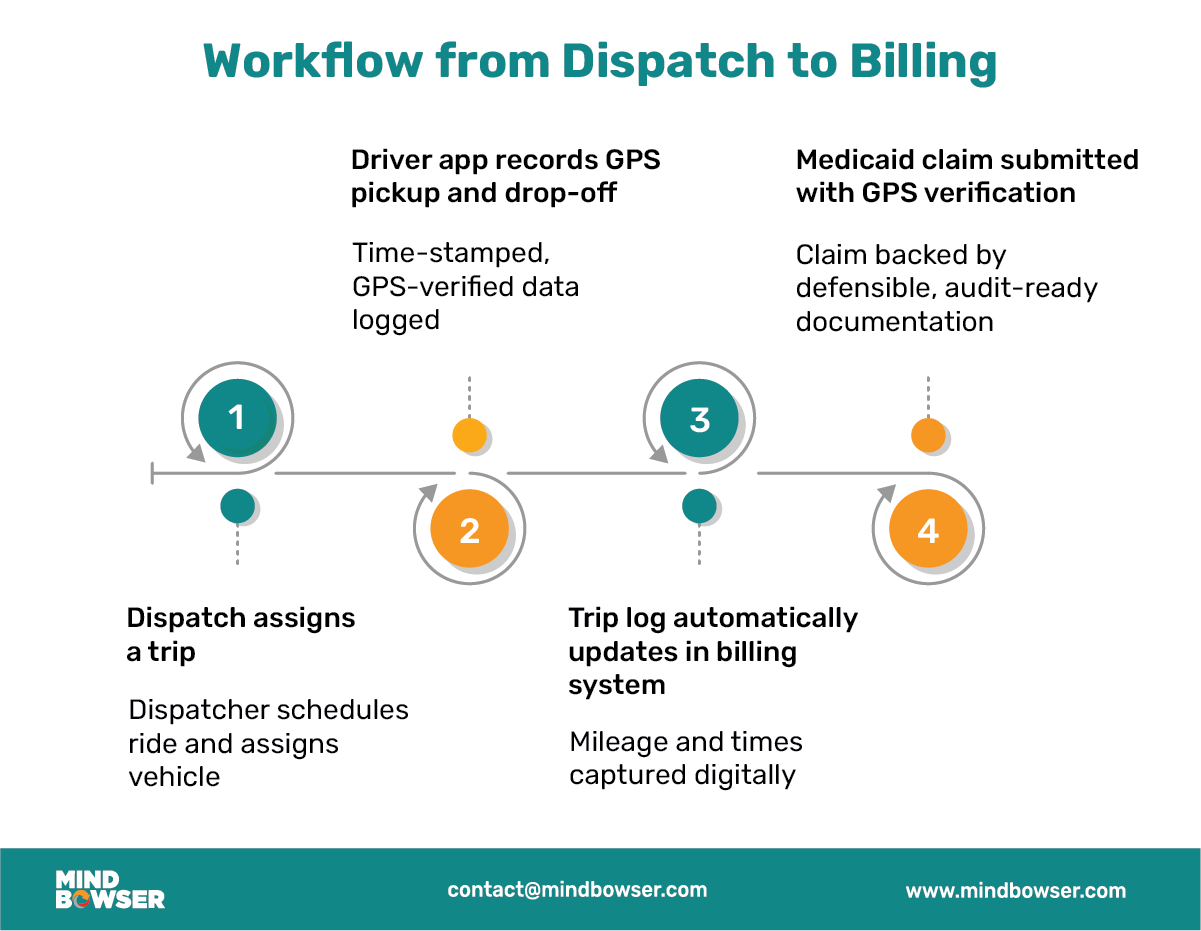
One of the most important functions of GPS tracking in NEMT is the automatic creation of digital trip logs. Every ride generates an electronic record that includes:
For example: “Trip A: Pickup confirmed at 10:04 AM, drop-off completed at 10:32 AM, total mileage 12.7 miles.” This level of detail ensures that when a Medicaid claim is submitted, there is verified evidence that the ride occurred exactly as documented.
GPS tracking also extends to patient engagement. Many modern GPS dispatch systems send automated notifications to patients with estimated arrival times. Patients waiting for dialysis or specialist appointments no longer need to guess when their ride will arrive. By reducing uncertainty, providers build trust and improve overall satisfaction, while also reducing no-shows.
For providers, GPS-generated trip data is more than operational intelligence. It is proof of service that Medicaid programs and brokers require. By integrating GPS logs directly into billing systems, providers reduce the risk of human error, prevent fraudulent submissions, and pass audits with confidence. Missing or incomplete data often leads to claim rejections, which can result in significant annual costs for providers.
Real-time visibility allows dispatchers and managers to monitor every vehicle in the fleet on a single dashboard. Instead of relying on driver phone calls or manual updates, decision-makers see exactly where each van is and how trips are progressing. This transparency makes it easier to reassign rides, handle urgent requests, or redirect vehicles during traffic disruptions. Over time, this reduces idle time, increases the number of completed trips per day, and ensures drivers are used effectively.
For Medicaid-funded trips, every ride must be documented accurately. Real-time fleet visibility provides GPS-stamped evidence that can be tied directly to billing records. This eliminates gaps in trip logs that often lead to claim rejections. During audits, providers can export detailed reports that show pickup and drop-off times, the route taken, and mileage. Having this level of defensible data reduces the risk of penalties and strengthens a provider’s compliance posture.
Patients who depend on NEMT services often face anxiety about whether their ride will arrive on time. By integrating real-time vehicle tracking with patient communication tools, providers can share estimated arrival times through text alerts or mobile apps. Clinics and caregivers also benefit by being able to see when a patient is expected to arrive. This reduces the frequency of missed appointments and increases trust in the transportation service.
Real-time monitoring also improves safety. Dispatchers receive alerts if a vehicle breaks down, deviates from its assigned route, or encounters an unexpected delay. In the event of an emergency, knowing the exact location of the vehicle allows operators to respond quickly and coordinate assistance. Some advanced NEMT fleet management systems also include driver behavior monitoring, such as detecting harsh braking or prolonged idling, which can prevent accidents and reduce wear on vehicles.
Beyond compliance and service, visibility has a direct financial impact. Providers can compare planned routes with actual GPS data to identify inefficiencies that increase costs. They can also use mileage tracking to validate Medicaid claims, ensuring they are reimbursed correctly for every trip. Without this validation, providers risk losing revenue to claim denials or underreporting of mileage.
Route optimization is more than finding the shortest path between two points. In NEMT, software is required that considers multiple variables simultaneously, including traffic conditions, patient pickup locations, appointment times, vehicle capacity, and patient needs such as wheelchair accessibility. Advanced NEMT route optimization software utilizes algorithms to determine the most efficient sequence of trips, ensuring compliance with Medicaid and contractual obligations.
Many NEMT providers serve patients with recurring or time-sensitive appointments. Dialysis, chemotherapy, and rehabilitation visits cannot be delayed without impacting health outcomes. Route optimization ensures that these priority trips are scheduled first, while other rides are adjusted accordingly. The system can also automatically detect patterns in recurring rides and propose standing schedules, reducing manual work for dispatchers.
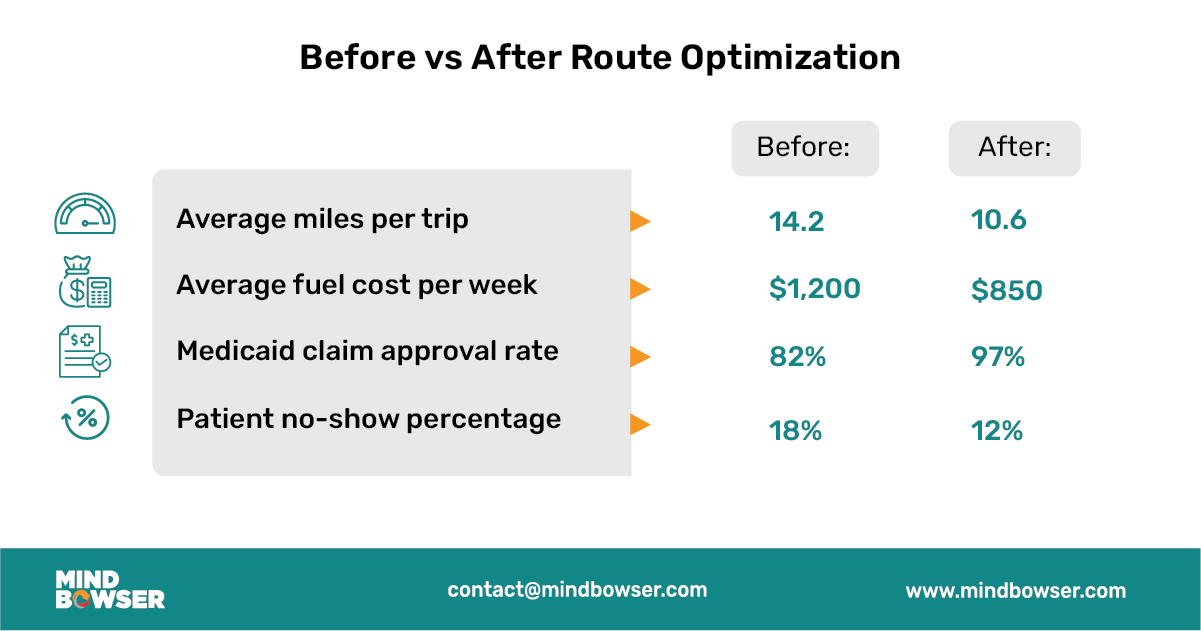
Unlike a single-rider taxi service, NEMT frequently involves transporting multiple patients in the same vehicle. Route optimization software groups trips in a way that maximizes van utilization while minimizing detours. For example, patients living in nearby neighborhoods with appointments at the same clinic can be scheduled to travel together in the same vehicle. This increases efficiency, lowers fuel usage, and ensures patients arrive together on time.
Healthcare transportation is unpredictable. Patients may cancel at the last minute, traffic accidents may delay drivers, or clinics may run behind schedule. Advanced route planning software for NEMT can dynamically adjust routes in real-time. When one appointment is delayed, the system resequences other pickups and drop-offs to minimize overall disruption. Dispatchers no longer need to reshuffle schedules because the software handles adjustments automatically manually.
The financial benefits of route optimization are significant. Studies show that optimized routing can reduce fuel and driver time by 20 to 30 percent annually. For providers, this means lower operating expenses and the ability to complete more trips without increasing fleet size. Optimized routing also improves on-time performance, which is often a contract requirement for Medicaid brokers and health systems. Providers that consistently meet or exceed on-time performance standards position themselves as reliable partners in value-based care networks.
For patients, optimized routes translate into shorter travel times and fewer delays. Someone heading to dialysis three times per week will appreciate consistency and punctuality. By using route optimization, providers not only save money but also deliver a better patient experience that supports adherence to care plans and reduces missed appointments.
A mid-sized NEMT provider operating in three counties faced a recurring problem. Every month, nearly 15 to 20 percent of their Medicaid claims were denied. The reason was not a service failure, but rather incomplete documentation. Trips lacked GPS verification, mileage records were sometimes handwritten, and dispatch notes did not always match billing submissions. Medicaid auditors flagged these inconsistencies, resulting in almost $50,000 in lost revenue annually.
The financial loss was only part of the issue. Each rejected claim created administrative rework. Staff had to manually review trip sheets, call drivers for verification, and resubmit claims, which added weeks to reimbursement timelines. This slowed cash flow and increased dependency on credit lines. Over time, the provider’s reputation with the state Medicaid agency suffered because of frequent resubmissions.
To address this, the provider implemented a GPS dispatch system with integrated trip logging. Each vehicle was equipped with GPS-enabled driver apps that automatically recorded pickup and drop-off times, locations, and mileage. At the end of each trip, a digital record was generated and tied directly to the billing system. Claims submitted to Medicaid now include verified timestamps and geocoded mileage, leaving no room for disputes.
Within six months of adopting GPS tracking and route optimization, the provider’s claims approval rate jumped from around 80% to 98%. Rejected claims dropped dramatically because every submission included GPS-verified proof of service. The organization recovered tens of thousands of dollars in previously lost revenue and reduced administrative hours spent on rework.
Beyond revenue recovery, the system positioned the provider as a trusted partner for brokers and Medicaid agencies. Compliance audits that once caused anxiety became opportunities to demonstrate operational reliability. By having defensible records tied to GPS logs, the provider strengthened its eligibility for new contracts and built stronger relationships with payers.
In many NEMT operations, dispatch and billing systems have historically worked in silos. Dispatchers would manually assign trips, while billing staff relied on paper logs or driver notes to process claims. This separation created delays and errors. With integrated NEMT GPS tracking and dispatch platforms, trip assignments are automatically linked to vehicle location data. As soon as a dispatcher assigns a ride, the GPS system begins recording the driver’s route, status, and timestamps. This creates a seamless connection between scheduling and trip verification.
Once a trip is completed, the GPS-enabled system generates a digital trip log. This log contains key details, including pickup and drop-off times, mileage covered, and proof of delivery signatures. Instead of manually re-entering this data into the billing platform, the information flows directly into the claims system. By eliminating duplicate data entry, providers reduce the risk of human error that often leads to rejected Medicaid claims.
Administrative teams no longer need to spend hours reconciling driver notes with dispatch records. The automation provided by an integrated GPS dispatch system enables billing clerks to submit claims more quickly and with greater confidence in their accuracy. This not only saves time but also shortens the reimbursement cycle, improving cash flow for the provider.
One of the most common reasons for Medicaid claim rejections is documentation that does not match trip records. With integrated systems, the risk of discrepancies is significantly reduced. For example, if a trip is scheduled for 10 miles but the GPS log shows 12.7 miles, the billing system automatically adjusts the claim to reflect the actual distance traveled. This ensures accuracy and strengthens audit readiness.
Integration does more than streamline day-to-day operations. It provides leadership with visibility into both operational and financial performance. Dispatchers, billing teams, and executives can access the same source of truth through connected dashboards. This unified view helps providers identify inefficiencies, track claim approval rates, and make data-driven decisions that directly impact growth and compliance.
While GPS tracking provides essential visibility into the location of vehicles, modern NEMT operations increasingly rely on telematics to capture deeper insights. Telematics combines GPS data with onboard diagnostics and driver behavior monitoring. This allows providers to see not just where a vehicle is located, but also how it is being driven and how well the vehicle is performing mechanically.
Driver behavior has a direct impact on patient safety, fleet longevity, and insurance costs. Telematics systems record metrics such as speed, rapid acceleration, harsh braking, sharp turns, and prolonged idling. These insights enable managers to identify risky driving patterns, provide targeted training, and even reward safe driving practices. For NEMT providers, where passengers often include seniors and individuals with mobility challenges, safer driving translates to improved patient experience and fewer incident reports.
Telematics can monitor engine diagnostics, battery health, fuel efficiency, and provide maintenance alerts in real-time. By catching early signs of mechanical issues, providers can schedule preventative maintenance before small problems escalate into breakdowns. This reduces downtime, extends vehicle lifespan, and ensures patients are not stranded due to sudden failures. For fleets that operate at high capacity on a daily basis, predictive maintenance is crucial for maintaining reliability.
Driver behavior monitoring and predictive maintenance both contribute to cost control and efficiency. For instance, reducing excessive idling can save thousands of dollars annually in fuel costs. Identifying unsafe driving not only prevents accidents but can also lower insurance premiums. Insurance companies often offer discounts to providers who use telematics systems to monitor and improve driver safety.
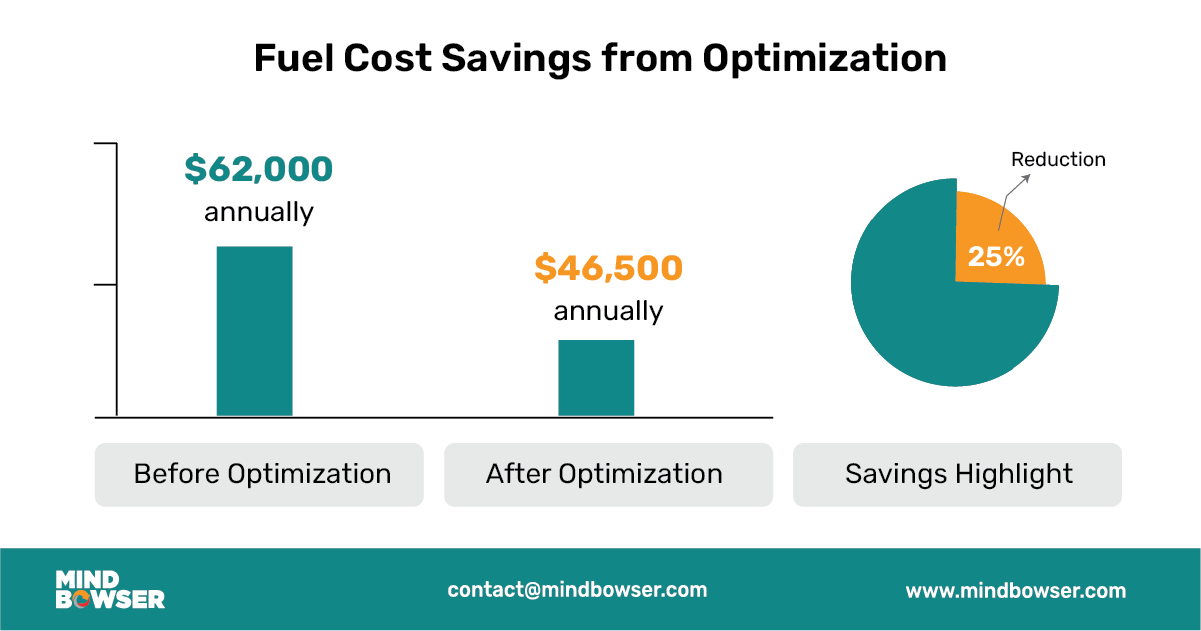
Telematics also supports compliance with Medicaid and state regulations. GPS logs, paired with telematics data, create a comprehensive trip record that is difficult to dispute during audits. If a claim is questioned, providers can produce evidence of the exact route taken, mileage traveled, and even vehicle performance during the trip. This level of documentation enhances audit readiness and reduces exposure to penalties.
The value of telematics goes beyond compliance and operational efficiency. Over time, the data collected becomes a powerful source of business intelligence. Providers can analyze trends across the fleet, compare performance among drivers, and model cost savings opportunities. This transforms telematics from a safety and compliance tool into a strategic asset that supports growth, competitiveness, and financial sustainability.
Several states have made GPS validation a mandatory component of Medicaid-funded NEMT trips. For example, Texas and New Jersey require electronic records that verify pickup and drop-off with GPS coordinates and timestamps. Providers that cannot produce this information risk claim denials, reimbursement delays, and even contract termination. This makes GPS for medical transportation an essential safeguard rather than an optional tool.
While GPS data is critical for compliance, it also involves handling sensitive patient information. Pickup and drop-off addresses reveal personal health details such as frequent dialysis visits, chemotherapy appointments, or rehabilitation schedules. Under HIPAA, this information is classified as Protected Health Information (PHI). Providers must ensure that GPS tracking systems use encryption for data in transit and at rest, apply strict role-based access controls, and maintain clear audit logs of who accessed what data. Failure to do so can result in fines of up to $50,000 per violation.
State Medicaid agencies regularly conduct audits to verify the accuracy of transportation claims. A common reason for claim clawbacks is a lack of defensible trip documentation. Providers using GPS tracking with automated digital logs are better prepared to pass audits because they can produce evidence such as:
Having this information available in a single system reduces the time and stress associated with audit requests.
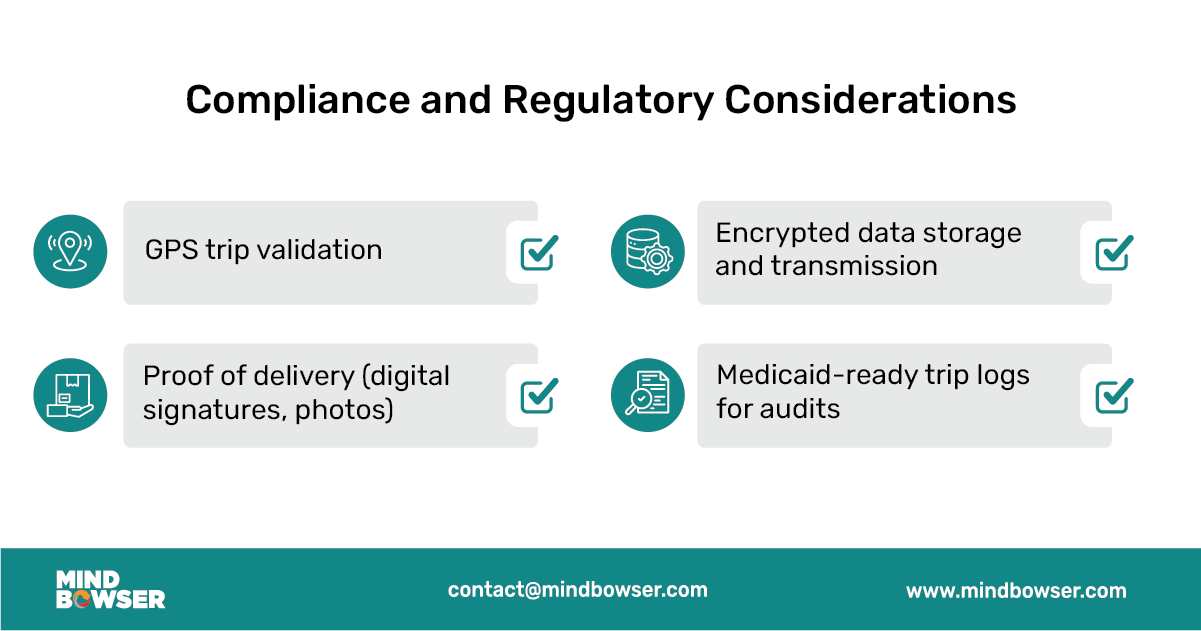
NEMT providers must also hold technology vendors accountable for compliance. A reliable vendor should sign a Business Associate Agreement (BAA), provide proof of HIPAA-compliant hosting, and ideally maintain third-party certifications such as SOC 2 or HITRUST. Providers should ask for evidence of security audits, penetration tests, and data governance practices. Without these safeguards, the liability of a data breach falls back on the provider, even if the vendor was at fault.
Compliance requirements should never compromise patient care. The right NEMT fleet management solution strikes a balance between regulatory standards and usability. Patients can still receive real-time ride notifications, and caregivers can still track vehicles, while the provider ensures all data is encrypted, auditable, and aligned with Medicaid rules. Achieving this balance requires thoughtful vendor selection and strong internal policies.
Compliance is not just about avoiding penalties. For many providers, it is a competitive advantage. Medicaid brokers and healthcare systems prefer to work with transportation partners who can demonstrate strong audit readiness and reliable data security. Providers that invest in compliant NEMT GPS tracking systems position themselves for long-term growth, stronger payer relationships, and greater trust among patients.
One of the biggest challenges NEMT providers face is connecting transportation systems with existing healthcare infrastructure. Mindbowser develops custom NEMT GPS tracking and route optimization software that integrates directly with Medicaid APIs, state transportation portals, and Electronic Health Record (EHR) systems. This means eligibility checks, trip authorizations, and billing records flow seamlessly without manual re-entry. By embedding GPS trip data into Medicaid claim files, providers strengthen compliance and reduce the risk of rejections.
For providers managing dozens or even hundreds of vehicles, manual scheduling is no longer a sustainable option. Mindbowser applies artificial intelligence to optimize routing across entire fleets. The system takes into account patient location, appointment urgency, real-time traffic, vehicle type, and accessibility requirements. This allows providers to reduce mileage, increase trip volume per driver, and achieve measurable savings on fuel and labor costs.
Mindbowser builds mobile applications designed for both drivers and patients. Drivers can receive trip assignments, navigate with integrated GPS, capture proof of delivery, and automatically update trip status. Patients can track their rides in real time, receive reminders, and confirm pickups through the app. This dual approach enhances communication, reduces missed rides, and improves satisfaction for both patients and healthcare partners.
A critical factor in choosing a technology partner is avoiding vendor lock-in. Many off-the-shelf solutions retain ownership of source code, which limits flexibility and forces providers into long-term contracts. Mindbowser takes a different approach by ensuring providers retain ownership of their code and data models. This provides operators with long-term control, the freedom to make modifications, and the ability to scale without being tied to restrictive licensing agreements.
Every provider has unique compliance and financial reporting needs. Mindbowser designs dashboards that present key performance indicators specific to NEMT operations. These may include on-time performance, claim approval rates, cost per mile, driver utilization, and compliance readiness scores. By tailoring dashboards, providers gain visibility into both operations and financial health, allowing them to make informed decisions that directly improve performance.
Mindbowser’s approach goes beyond solving today’s dispatch and billing challenges. Platforms are designed to scale with future needs, including predictive scheduling, telehealth ride coordination, and advanced analytics. This ensures that providers investing in a custom solution today are equipped to handle the demands of tomorrow’s healthcare transportation environment.
Custom-built GPS and route optimization platforms provide more than operational efficiency. They create a foundation for compliance, patient satisfaction, and financial growth. Providers using Mindbowser-built systems have reported lower denial rates, stronger audit readiness, higher patient retention, and measurable cost savings. These outcomes demonstrate why customization is often the smarter long-term strategy compared to generic off-the-shelf tools.
Fuel remains one of the largest recurring expenses for NEMT providers. On average, fuel accounts for approximately 30% of operating costs. Inefficient routing and unnecessary mileage directly increase these expenses. Providers that adopt NEMT route optimization software report annual savings of 15 to 25 percent, achieved by reducing deadhead miles, minimizing idle time, and improving trip sequencing.
Claim rejection remains one of the most significant financial risks in NEMT. Studies show that up to 70% of rejected claims are linked to documentation errors, many of which involve missing or inaccurate GPS data. Providers who integrate GPS-verified trip logs into their billing systems consistently achieve higher approval rates, with some reporting improvements from 80% to more than 95% in claim acceptance.
Dispatchers who rely on manual scheduling can only handle a limited number of vehicles effectively. With advanced route planning software for NEMT, providers can increase dispatcher productivity by 30-40%. Real-time tracking and automated scheduling reduce the need for constant phone calls to drivers, freeing up staff to focus on more strategic tasks.
Missed medical appointments cost the U.S. healthcare system more than 150 billion dollars each year, with Medicaid patients disproportionately affected. Providers using GPS tracking and automated ride notifications have reduced patient no-shows by 20-30%. For high-frequency riders such as dialysis patients, timely and predictable transportation directly contributes to better health outcomes.
The combined benefits of reduced fuel consumption, fewer claim rejections, and improved trip throughput create a strong return on investment. A mid-sized NEMT provider with 25 vehicles can save more than 500,000 dollars annually by implementing integrated GPS tracking and route optimization. This level of impact transforms technology adoption from an expense into a revenue protection strategy.

Mindbowser builds custom GPS tracking and route optimization platforms that integrate directly with Medicaid systems, broker portals, and electronic health records. This seamless flow of data reduces manual work, improves billing accuracy, and ensures providers remain compliant with state and federal requirements.
By applying artificial intelligence, these platforms optimize routes across entire fleets, reducing fuel costs and increasing on-time performance. Driver and patient apps add another layer of value by enabling proof of delivery, real-time ride tracking, and automated notifications that strengthen both efficiency and patient satisfaction.
Unlike off-the-shelf solutions, Mindbowser ensures providers retain full ownership of their code and data models. This gives organizations the flexibility to adapt to changing Medicaid rules, new payer contracts, and future innovations. With tailored dashboards and scalable design, providers are equipped to handle today’s operational challenges while preparing for emerging trends in healthcare transportation.
NEMT providers typically use two types of GPS solutions: dedicated in-vehicle GPS hardware or mobile driver applications. Dedicated hardware is installed directly into the vehicle, offering continuous tracking even if the driver’s phone loses connectivity. Mobile driver apps are more flexible and cost-effective, leveraging smartphones to record location, trip status, and mileage. Many providers use a combination of both to ensure reliability. The choice depends on factors such as fleet size, budget, and compliance requirements established by state Medicaid programs.
Yes. A significant percentage of Medicaid claim denials is attributed to incomplete or inaccurate trip documentation. With GPS for medical transportation, providers generate automatic trip logs that include timestamps, mileage, and route verification. This data becomes defensible evidence during audits, ensuring that each claim meets Medicaid’s verification standards. Providers who adopt GPS-enabled billing workflows often see their approval rates increase to 95 percent or higher.
Modern GPS tracking systems are highly accurate, often within a few meters of the vehicle’s actual position. This level of precision ensures that mileage calculations are accurate, which is crucial for billing Medicaid claims. When integrated with NEMT route optimization software, GPS data not only validates mileage but also aligns it with scheduled pickup and drop-off times. This creates a transparent and reliable record that billing teams can submit with confidence.
Yes, although the benefits differ from urban settings. In rural areas, providers face longer distances between patient homes and healthcare facilities, as well as limited road options. Route planning software for NEMT helps by sequencing trips more efficiently, grouping patients when possible, and avoiding unnecessary detours. While rural routes may not allow as many multi-passenger optimizations as urban routes, providers still save on fuel costs, reduce travel time, and improve appointment punctuality.
Patients who rely on NEMT often experience stress about whether their ride will arrive on time. GPS tracking enables providers to share real-time ETAs through text messages or mobile apps. This transparency reduces anxiety and builds trust. Patients who can see their driver approaching are less likely to cancel or miss appointments. For recurring riders such as dialysis or rehabilitation patients, consistent service supported by GPS tracking strengthens adherence to treatment plans.
Yes, when implemented correctly. Providers must ensure that all GPS trip data is encrypted both during transmission and while stored in databases. Access should be restricted using role-based controls, and vendors should provide clear audit trails showing who accessed data and when. Choosing a vendor that signs a Business Associate Agreement (BAA) and maintains compliance certifications such as SOC 2 or HITRUST helps providers meet HIPAA standards while protecting patient privacy.

We worked with Mindbowser on a design sprint, and their team did an awesome job. They really helped us shape the look and feel of our web app and gave us a clean, thoughtful design that our build team could...


The team at Mindbowser was highly professional, patient, and collaborative throughout our engagement. They struck the right balance between offering guidance and taking direction, which made the development process smooth. Although our project wasn’t related to healthcare, we clearly benefited...

Founder, Texas Ranch Security

Mindbowser played a crucial role in helping us bring everything together into a unified, cohesive product. Their commitment to industry-standard coding practices made an enormous difference, allowing developers to seamlessly transition in and out of the project without any confusion....

CEO, MarketsAI

I'm thrilled to be partnering with Mindbowser on our journey with TravelRite. The collaboration has been exceptional, and I’m truly grateful for the dedication and expertise the team has brought to the development process. Their commitment to our mission is...

Founder & CEO, TravelRite

The Mindbowser team's professionalism consistently impressed me. Their commitment to quality shone through in every aspect of the project. They truly went the extra mile, ensuring they understood our needs perfectly and were always willing to invest the time to...

CTO, New Day Therapeutics

I collaborated with Mindbowser for several years on a complex SaaS platform project. They took over a partially completed project and successfully transformed it into a fully functional and robust platform. Throughout the entire process, the quality of their work...

President, E.B. Carlson

Mindbowser and team are professional, talented and very responsive. They got us through a challenging situation with our IOT product successfully. They will be our go to dev team going forward.

Founder, Cascada

Amazing team to work with. Very responsive and very skilled in both front and backend engineering. Looking forward to our next project together.

Co-Founder, Emerge

The team is great to work with. Very professional, on task, and efficient.

Founder, PeriopMD

I can not express enough how pleased we are with the whole team. From the first call and meeting, they took our vision and ran with it. Communication was easy and everyone was flexible to our schedule. I’m excited to...

Founder, Seeke

We had very close go live timeline and Mindbowser team got us live a month before.

CEO, BuyNow WorldWide

Mindbowser brought in a team of skilled developers who were easy to work with and deeply committed to the project. If you're looking for reliable, high-quality development support, I’d absolutely recommend them.

Founder, Teach Reach

Mindbowser built both iOS and Android apps for Mindworks, that have stood the test of time. 5 years later they still function quite beautifully. Their team always met their objectives and I'm very happy with the end result. Thank you!

Founder, Mindworks

Mindbowser has delivered a much better quality product than our previous tech vendors. Our product is stable and passed Well Architected Framework Review from AWS.

CEO, PurpleAnt

I am happy to share that we got USD 10k in cloud credits courtesy of our friends at Mindbowser. Thank you Pravin and Ayush, this means a lot to us.

CTO, Shortlist

Mindbowser is one of the reasons that our app is successful. These guys have been a great team.

Founder & CEO, MangoMirror

Kudos for all your hard work and diligence on the Telehealth platform project. You made it possible.

CEO, ThriveHealth

Mindbowser helped us build an awesome iOS app to bring balance to people’s lives.

CEO, SMILINGMIND

They were a very responsive team! Extremely easy to communicate and work with!

Founder & CEO, TotTech

We’ve had very little-to-no hiccups at all—it’s been a really pleasurable experience.

Co-Founder, TEAM8s

Mindbowser was very helpful with explaining the development process and started quickly on the project.

Executive Director of Product Development, Innovation Lab

The greatest benefit we got from Mindbowser is the expertise. Their team has developed apps in all different industries with all types of social proofs.

Co-Founder, Vesica

Mindbowser is professional, efficient and thorough.

Consultant, XPRIZE

Very committed, they create beautiful apps and are very benevolent. They have brilliant Ideas.

Founder, S.T.A.R.S of Wellness

Mindbowser was great; they listened to us a lot and helped us hone in on the actual idea of the app. They had put together fantastic wireframes for us.

Co-Founder, Flat Earth

Mindbowser was incredibly responsive and understood exactly what I needed. They matched me with the perfect team member who not only grasped my vision but executed it flawlessly. The entire experience felt collaborative, efficient, and truly aligned with my goals.

Founder, Child Life On Call

The team from Mindbowser stayed on task, asked the right questions, and completed the required tasks in a timely fashion! Strong work team!

CEO, SDOH2Health LLC

Mindbowser was easy to work with and hit the ground running, immediately feeling like part of our team.

CEO, Stealth Startup

Mindbowser was an excellent partner in developing my fitness app. They were patient, attentive, & understood my business needs. The end product exceeded my expectations. Thrilled to share it globally.

Owner, Phalanx

Mindbowser's expertise in tech, process & mobile development made them our choice for our app. The team was dedicated to the process & delivered high-quality features on time. They also gave valuable industry advice. Highly recommend them for app development...

Co-Founder, Fox&Fork
